Top 17 Exercises for Ankylosing Spondylitis
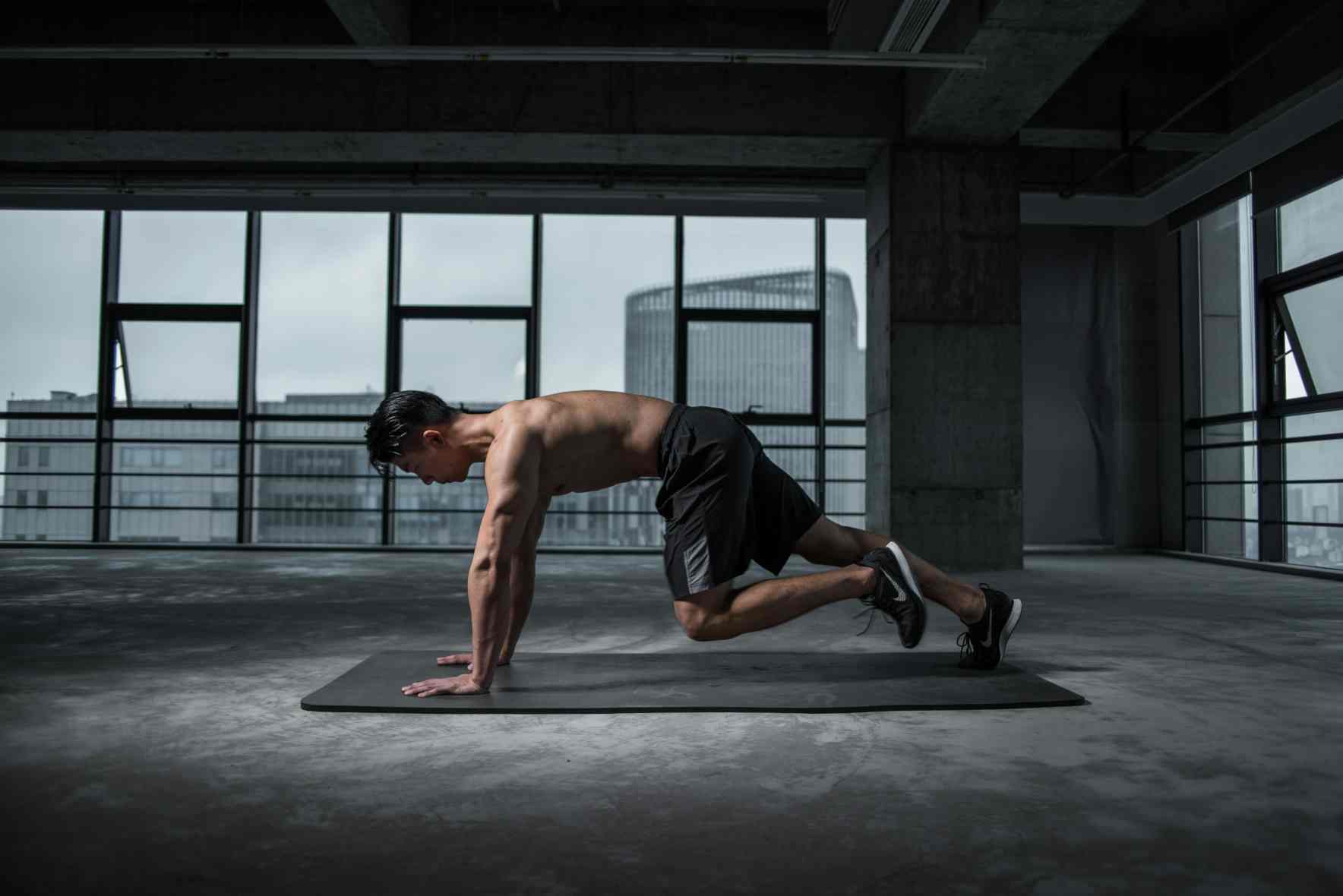
Ankylosing spondylitis, which means “rounded” back, occurs due to the stiffening of the vertebral and sacroiliac joints. It is a kind of inflammatory arthritis and an autoimmune disease that gradually increases.
You might experience prevailing pain and stiffness in your back as early symptoms. When you start noticing the signs, exercise is a great way to treat this disease.

Table of Contents

What is Ankylosing Spondylitis?
Ankylosing spondylitis (AS) is arthritis that mainly affects the spine. It causes inflammation in the joints of the spine, leading to pain and stiffness, especially in the lower back. Over time, the inflammation can cause new bone to form, potentially fusing the spinal bones. This can limit flexibility and, in severe cases, lead to a hunched posture.
Causes of Ankylosing Spondylitis
Ankylosing spondylitis (AS) doesn't have a single known cause, but scientists believe it's linked to genetics and possibly environmental triggers. Here's the breakdown:
Genetics: People with a gene called HLA-B27 are at a much higher risk of AS. However, only some people with this gene develop the condition.
Immune System: AS is thought to be an autoimmune disease where the body's immune system mistakenly attacks healthy tissues in the spine and joints.
Although many additional gene variations could potentially cause the disease, HLA-B27 is currently the main gene that raises the risk of ankylosing spondylitis.
Symptoms of Ankylosing Spondylitis
Ankylosing spondylitis (AS) often shows itself with back pain and stiffness, especially in the mornings or after inactivity, targeting the lower back and hips. Ankylosing spondylitis symptoms differ from person to person. Whether moderate or severe, ankylosing spondylitis symptoms can worsen during "flares" and get better during remissions.
Other symptoms may appear because the disease can affect different body parts. These symptoms could include:
- Difficulty in Breathing: Breathing deeply may be difficult if there is inflammation in the joints that connect the ribs.
- Eye Problems: Uveitis is an inflammation of the eye that causes alterations in vision and pain in the eyes.
- Loss of Appetite: Appetite suppression and weight loss.
- Skin Problems: Rash on the skin, especially psoriasis.
- Abdominal Pain: Loose stools and soreness in the abdomen.
- Stiffness: This can make bending, twisting, and turning difficult.
- Fatigue: Feeling tired all the time, even after rest.
- Pain in Other Areas: Neck, shoulders, buttocks, feet, and even ribs can be affected.
17 Best Exercises for Ankylosing Spondylitis
As mentioned earlier, exercises are best for treating ankylosing spondylitis. Below are the 17 most effective physical activities to practice daily.
1. Swimming

This disease restricts chest expansion, but you can treat it with simple chest exercises. Swimming is one of the best exercises for moving your whole body and increasing flexibility. In this regard, swimming helps to treat this condition by primarily working on your upper body, such as your chest, shoulder, neck, and arms.
How to Swim with Ankylosing Spondylitis?
Step 1: If you’re a beginner, get into the water and hold on to a floating object.
Step 2: Float in the water and kick your legs backwards to practice strokes.
Step 3: After learning simple strokes, let go of the floating object you’re holding on to.
2. Yoga

Yoga is one of the best exercises for ankylosing spondylitis that increases flexibility. Specific yoga postures can target your back and chest muscles. However, you must start with gentle poses and gradually increase your range of motion. Try simple poses first, then move on to complex ones.
How to Perform Yoga for Ankylosing Spondylitis?
Step 1: Pick a simple pose and get in that position.
Step 2: Sit in that pose for as long as instructed or as long as you can hold.
Step 3: Return to a normal, relaxing position after doing it once.
Step 4: Repeat a few times till you feel comfortable.
3. Hip Bridge
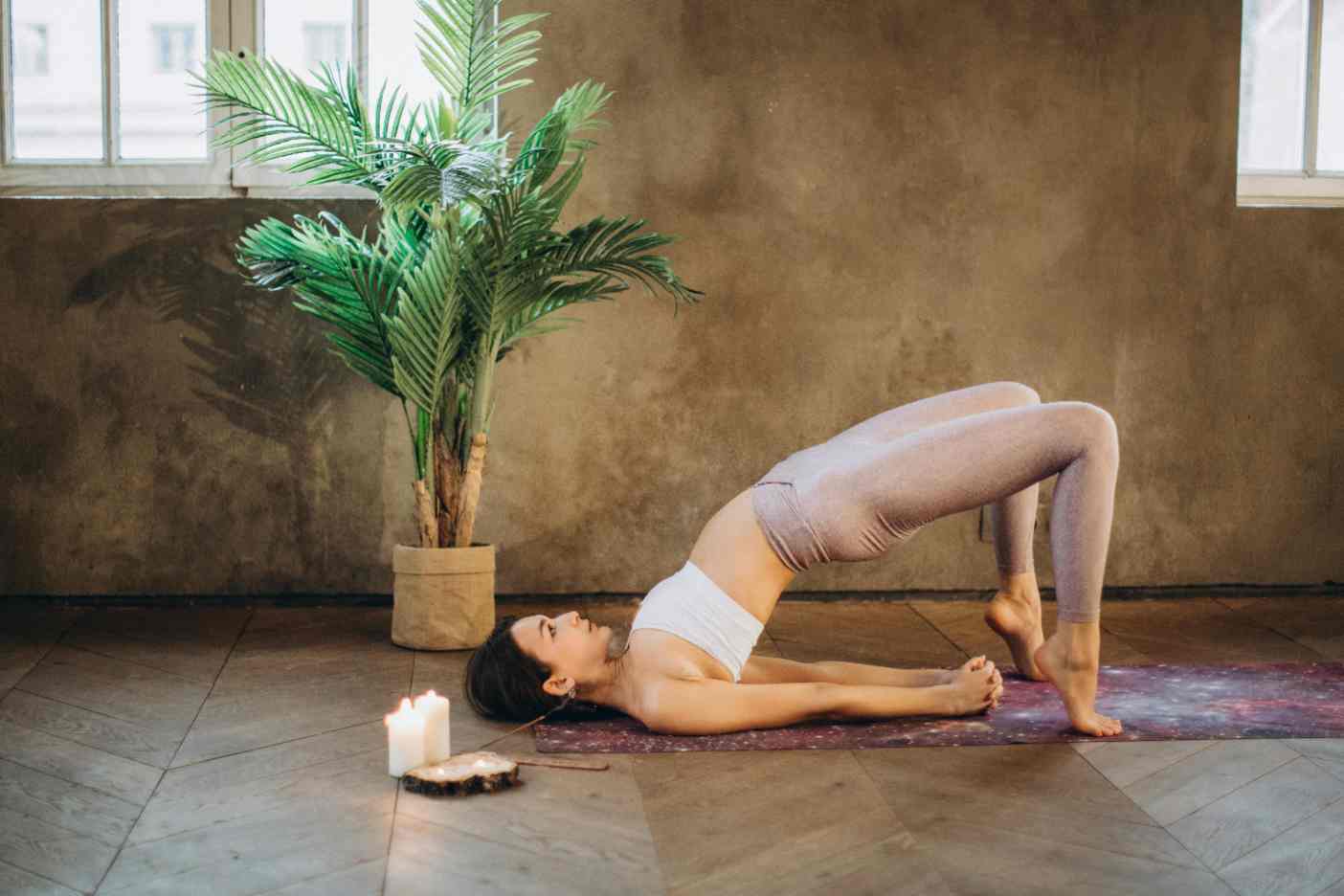
A strong back, spine, glutes, and core are essential for keeping you straight. Hip bridges are exercises that strengthen these areas of your body.
How to Perform Hip Bridge Exercise?
Step 1: Lie flat on your back and fold your knees to place the feet flat on the floor.
Step 2: Additionally, keep your hands beside your torso.
Step 3: Slowly lift your hip and lower back, ensuring your back is straight. You can also place your hands on your lower back to support the movement.
Step 4: Hold it for 5 seconds and slowly bring it down.
Step 5: Repeat the movement 5 more times for best results.
4. Lying Twist
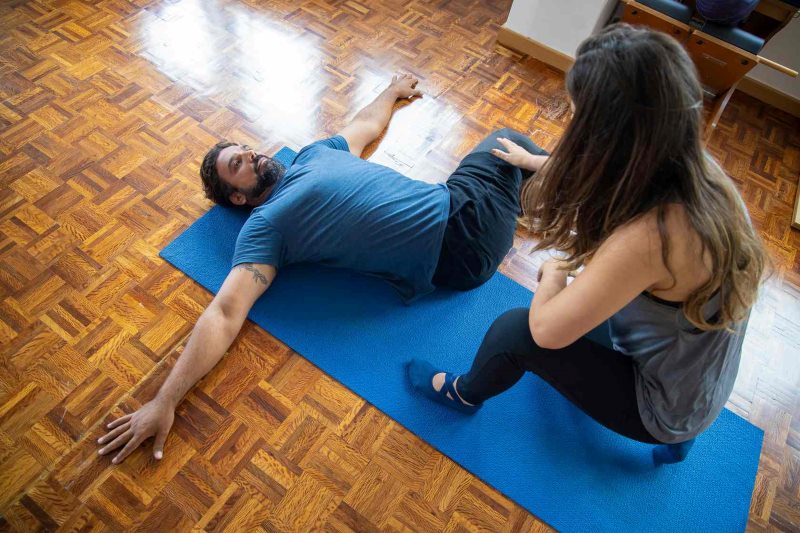
Ankylosing spondylitis stiffens the spine and back muscles. A great way to restore flexibility is to do twists. A lying twist will stretch your lower back and help your back stay straight during the exercise.
How to Perform Lying Twist Exercise?
Step 1: Lie on your back and fold your knees to touch your feet on the floor.
Step 2: Keep your hands on both sides of yours.
Step 3: Slowly rotate your knees to one side and return them to the opposite side.
Step 4: Repeat this movement to twist your lower back.
5. Breathing Exercise
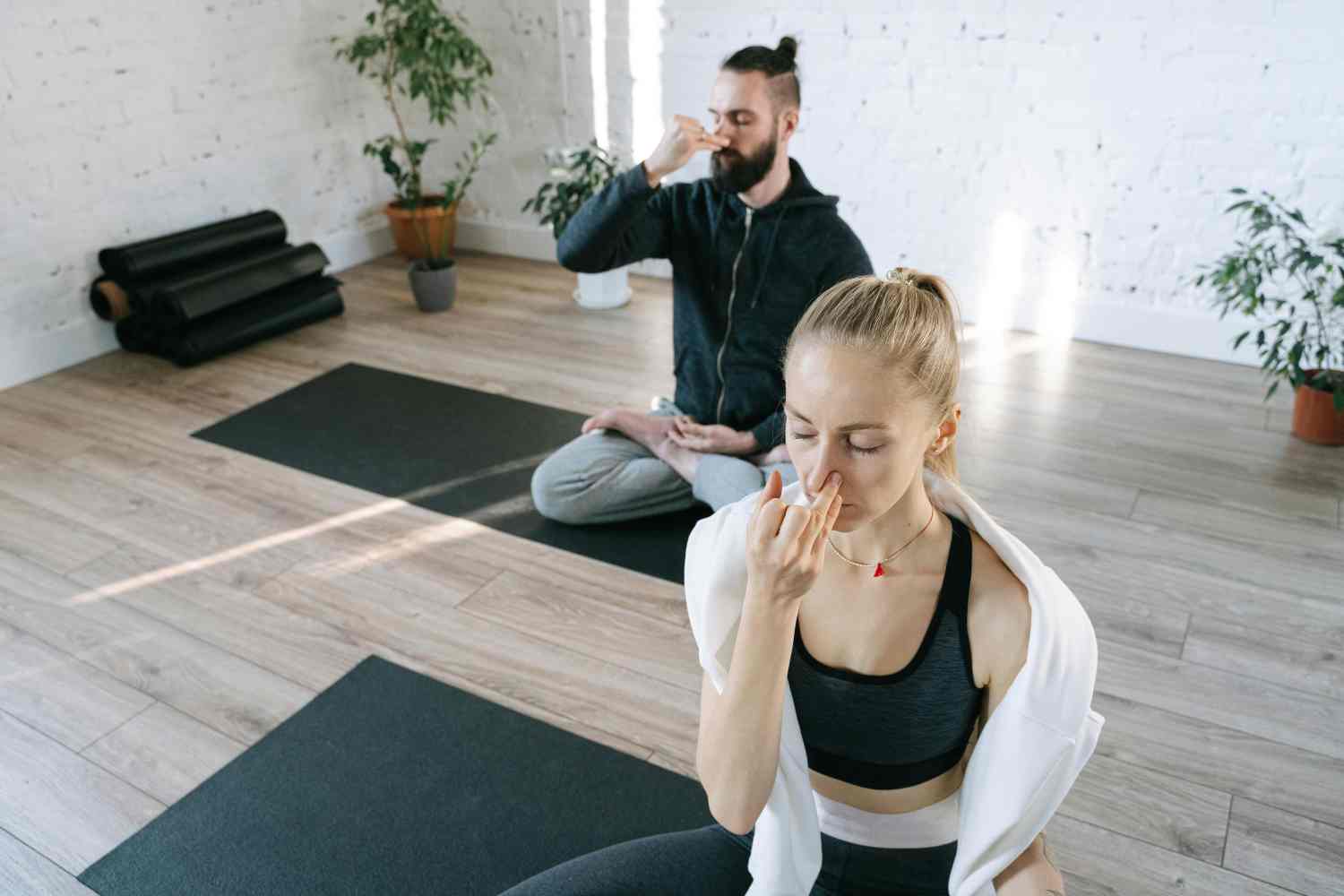
Breathing exercise involves deep breathing in and breathing out. Taking a deep breath helps expand your rib cage, chest muscles, and thoracic spine and improves flexibility.
How to Perform Breathing Exercise?
Step 1: Sit down, relax, and take a normal breath to start.
Step 2: Then, slowly take a deep breath and hold it for 5 seconds.
Step 3: Try breathing in with your chest, not your belly.
Step 4: Breathe out slowly with your nose and mouth.
Step 5: Perform this inhale and exhale for 30-60 minutes.
6. Superman Posture
Superman exercise is a great way to tackle the stiffness caused by ankylosing spondylitis. It strengthens the back, lower back, and hips and helps straighten the back by stretching it.
How to Perform Superman Posture?
Step 1: Lie on your chest and keep your hands straight above your head.
Step 2: You can lift both your arms and legs altogether.
Step 3: You can raise your right arm and left leg or vice-versa.
Step 4: Hold the pose for 5 seconds and lower slowly.
Step 5: Repeat it 5 times on each side.
7. Plank Posture
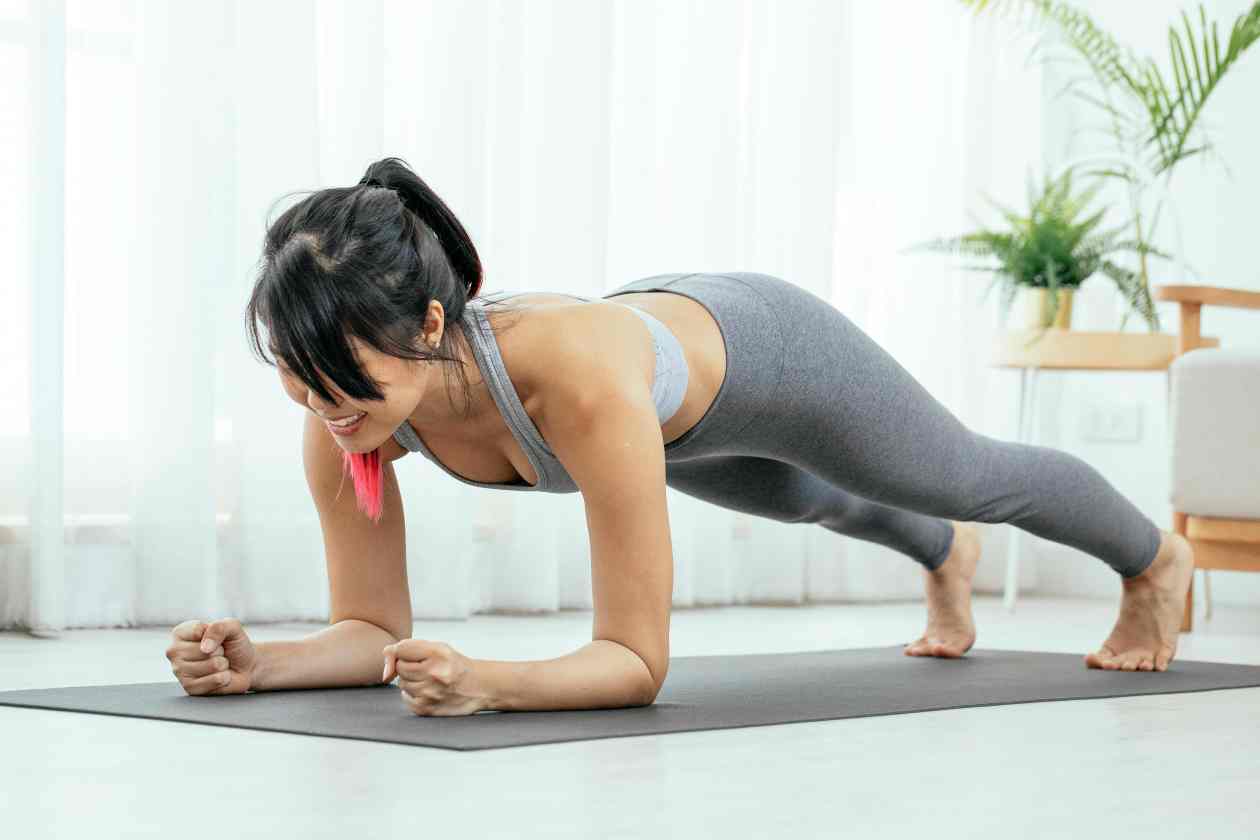
Ankylosing spondylitis causes stiffening of the spine and back pain. Planks are relatively hard but the most effective exercise for strengthening and straightening the back and core muscles.
How to Perform Plank Posture?
Step 1: Lay your arms on the floor, pull up your shoulder, and place your elbow perpendicular to your shoulder.
Step 2: Maintain a straight back and do not raise your hip.
Step 3: Hold it for 10 seconds for the first attempt and increase the time with growing repetitions.
Step 4: to release the position, come back into a table-top position
8. Wall Sitting
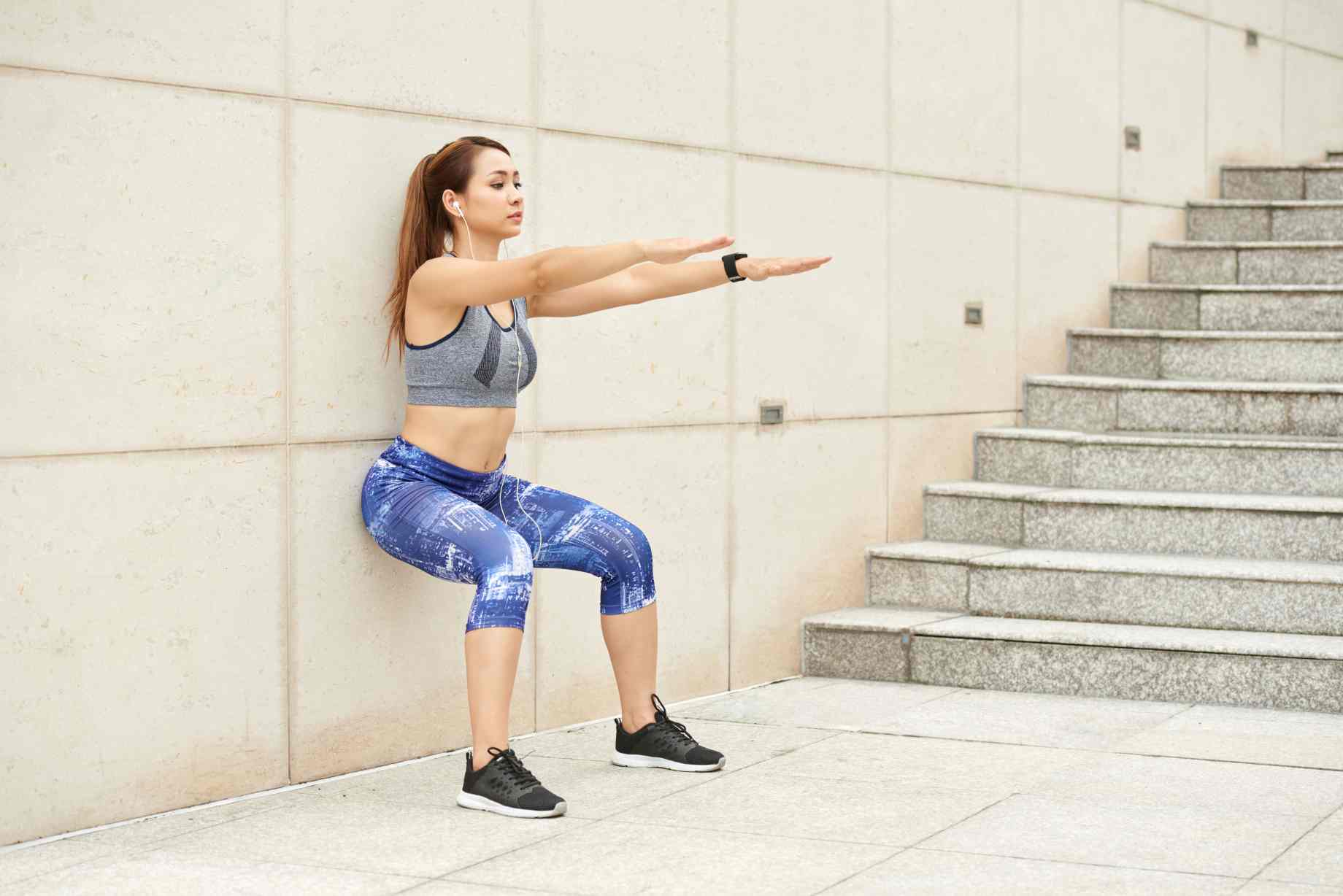
The symptoms of ankylosing spondylitis make you bend forward gradually. Wall sitting posture can help straighten your back and prevent you from stooping.
How to Perform Wall Sitting Posture?
Step 1: Stand by touching your back on a wall and gradually moving your feet away from the wall.
Step 2: Gradually slide your back downwards until you reach a sitting posture level.
Step 3: Make sure your thighs are parallel to the floor.
Step 4: Hold this pose for a few seconds or as long as your body permits.
9. Chin Tuck
If your neck muscles get stiff, they will bend your back. Chin tucks bring flexibility to your neck muscles and keep you upright. This is a simple exercise you can do anytime during the day.
How to Perform Chin Tuck Exercise?
Step 1: Lie on your back and tuck your chin inside for this posture.
Step 2: Hold it for 5-10 seconds and repeat it several times.
10. Tai Chi

This ancient Chinese method is excellent for people with ankylosing spondylitis. It is a practice of conscious and controlled movement with controlled breathing. It brings your body flexibility, stability, and balance and makes you straight.
How to perform Tai Chi?
Step 1: Practise standing on one leg before joining Tai Chi classes.
Step 2: Extending your elbow while standing on one leg, perform arm circles.
Step 3: Keep your balance and your core tight as you change legs and arm.
11. Cycling

Cycling is a good old exercise that works for almost everything. Whether you spin the wheel outdoors or in the gym, it helps the same way. It is a great aerobic exercise that works on your cardiovascular system. It also keeps your joints and spine strong and flexible.
How to Cycle for Beginners?
Step 1: If you’re a beginner, get your grip on the bicycle handle first.
Step 2: Find your balance and cycle slowly for 10 minutes on the first day.
Step 3: Once comfortable with the grip and balance, take your bicycle to the road for a long ride.
12. Walking

Ankylosing spondylitis occurs from inflammation but can increase for extra weight. You start to bend forward if your heavy upper body weighs you down. A great and simple way to control your weight is to take a walk. It also makes your body more flexible.
How to Walk for Beginners?
Step 1: Wear comfortable shoes and pick a level land to walk on.
Step 2: Take short steps and swing your arms swiftly as you walk.
Step 3: Initially, Walk slowly, then increase your speed eventually.
Step 4: A 10-15-minute daily walk can help you maintain and lose weight.
13. Cat-Cow Stretch
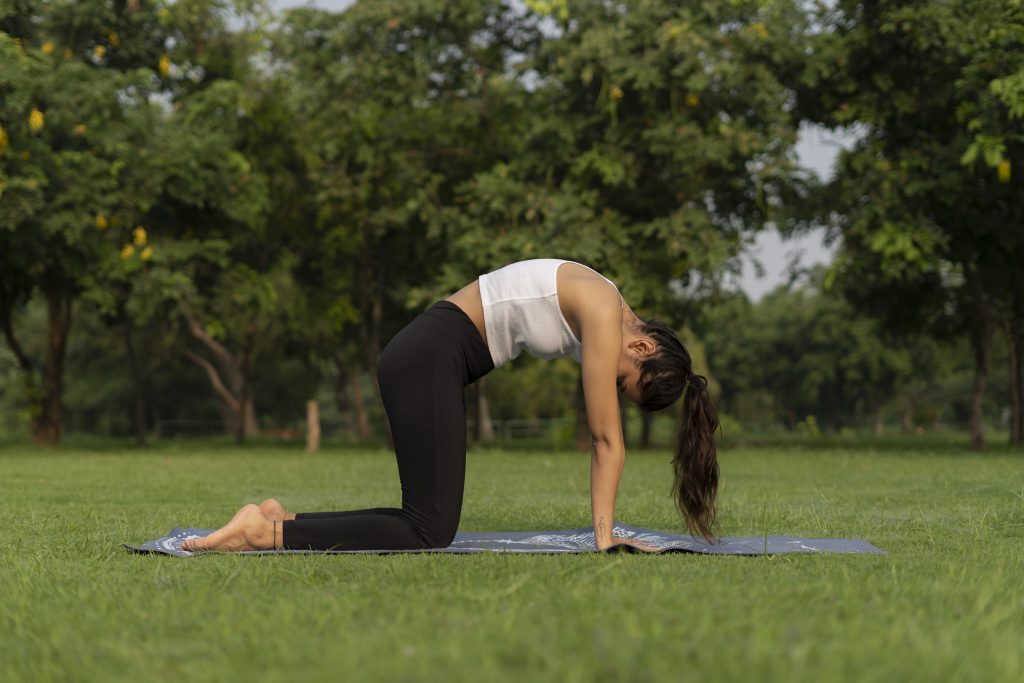
This yoga-inspired stretch helps improve flexibility and mobility in the spine, which is crucial for Ankylosing Spondylitis.
How to Perform the Cat-Cow Stretch?
Step 1: Start on your hands and knees, with your wrists directly under your shoulders and your knees under your hips.
Step 2: Inhale as you arch your back, dropping your belly towards the floor and lifting your head and tailbone towards the ceiling (cow position).
Step 3: Then exhale as you round your spine, tucking your chin to your chest and drawing your belly button towards your spine (cat position).
14. Hamstring Stretch
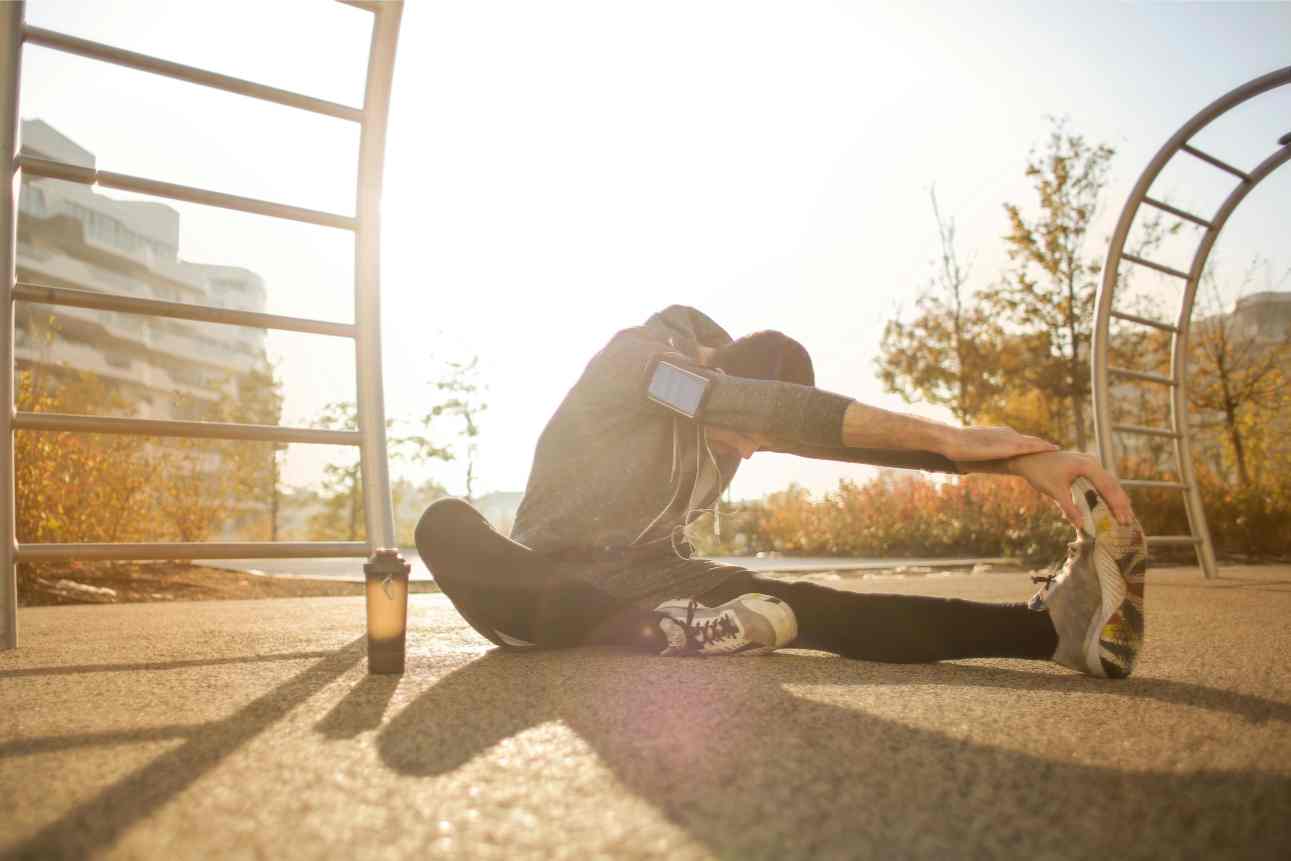
Tight hamstrings can contribute to back pain and stiffness in individuals with Ankylosing Spondylitis.
How to Perform the Hamstring Stretch?
Step 1: To stretch your hamstrings, sit on the floor with one leg extended straight in front of you and the other leg bent with the sole of your foot against the inner thigh of the extended leg.
Step 2: Lean forward from your hips, reaching towards your toes while keeping your back straight.
Step 3: Hold the stretch for 20-30 seconds, then switch legs.
15. Chest Opener Stretch
Ankylosing spondylitis can lead to rounded shoulders and decreased mobility in the chest and shoulders. To counteract this, try the chest opener stretch.
How to Perform the Chest Opener Stretch?
Step 1: Stand tall with your feet hip-width apart.
Step 2: Clasp your hands behind your back and gently straighten your arms as you lift them away from your body, opening up your chest.
Step 3: Keep your shoulders relaxed and down away from your ears.
Step 4: Hold the stretch for 20-30 seconds, then release.
16. Quadruped Arm/Leg Raise
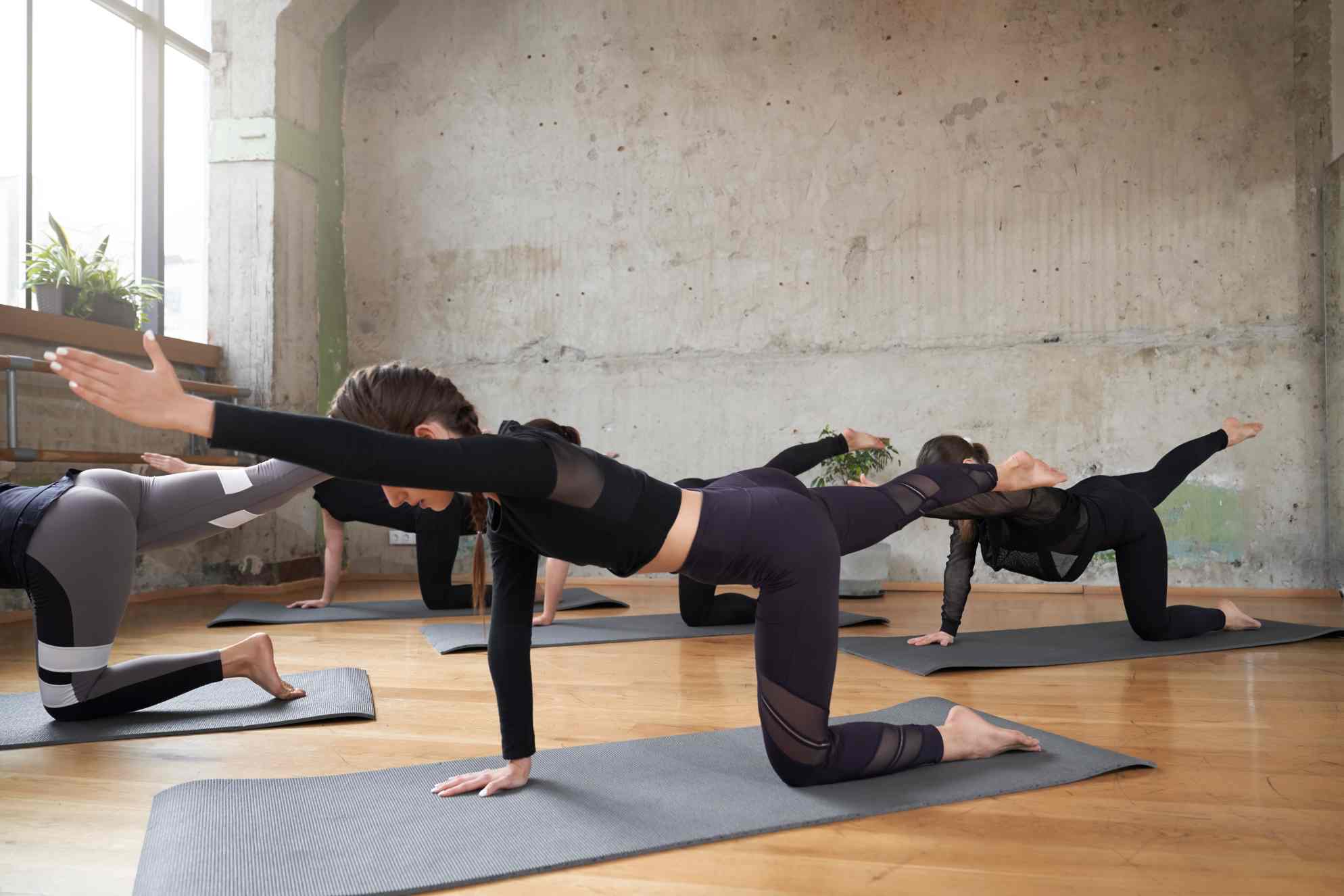
This exercise helps improve core stability and balance, essential for maintaining proper posture and preventing falls with Ankylosing Spondylitis.
How to Perform the Quadruped Arm/Leg Raise?
Step 1: Start on your hands and knees, with your wrists directly under your shoulders and your knees under your hips.
Step 2: Extend your right arm forward and your left leg backwards, separating them.
Step 3: Hold for a few seconds, then return to the starting position and switch sides.
17. Seated Spinal Twist
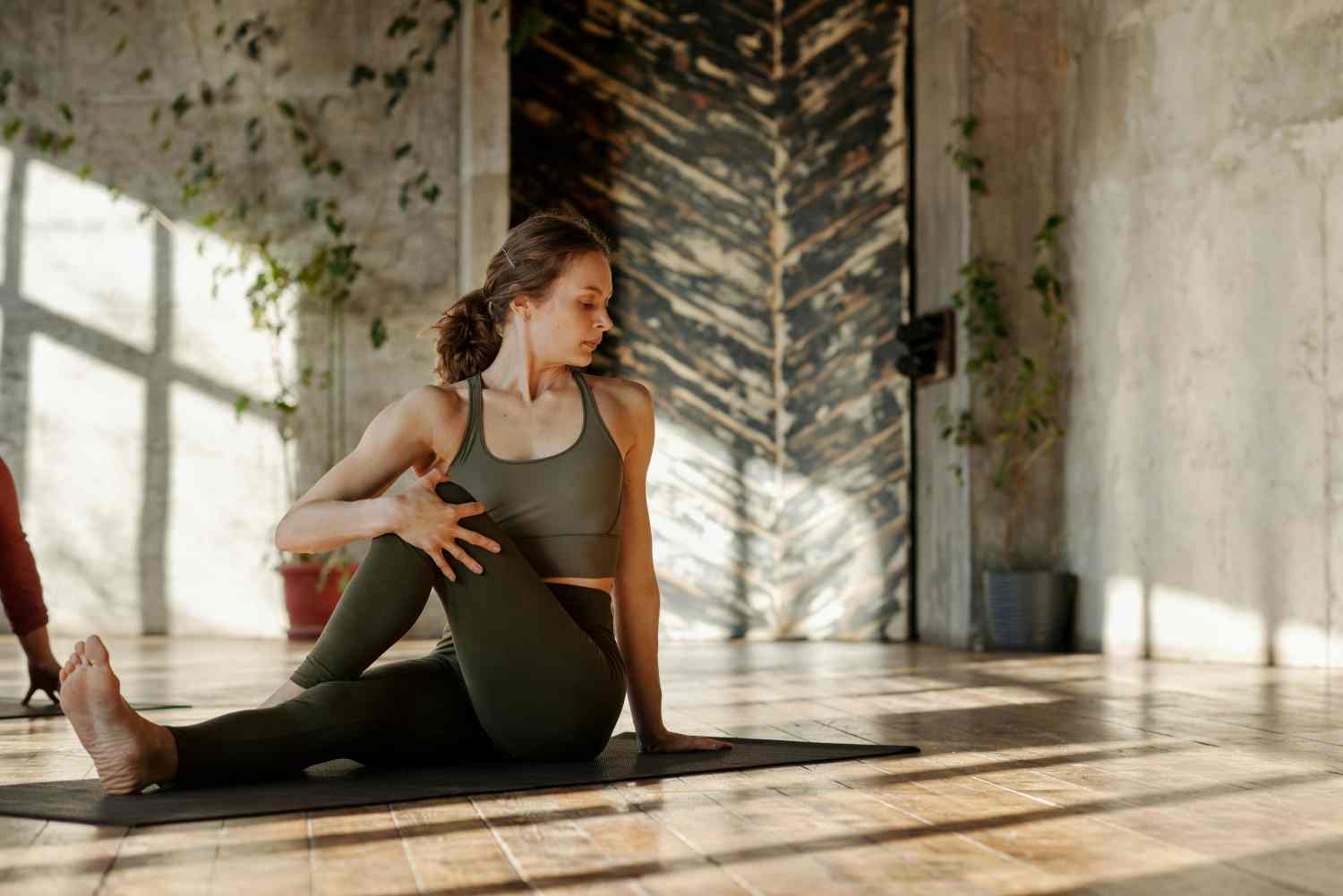
Spinal twists can help increase flexibility and mobility in the spine, promoting better motion and reducing stiffness associated with Ankylosing Spondylitis.
How to Perform the Seated Spinal Twist?
Step 1: Sit on the floor with your legs extended.
Step 2: Cross your right knee over your left leg, placing your right foot on the floor next to your left thigh.
Step 3: Place your left elbow outside your right knee and gently twist your torso, looking over your right shoulder.
Step 4: Hold the stretch for 20-30 seconds.
Types of Equipment Required for Ankylosing Spondylitis Exercises
Here’s a list of common equipment used in ankylosing spondylitis exercises. This equipment can vary depending on your workout routine and preferences.
Equipment |
Exercises |
| Exercise Mat | Floor exercises, stretches. |
| Resistance Bands | Strength training exercises |
| Yoga Strap | Hamstring Stretches |
| Foam Roller | Self-myofascial exercises |
| Stability Ball | Core exercises |
| Swimming | Swimming pool |
| Cycling | Bicycle |
Benefits of Exercising for Ankylosing Spondylitis
The above exercises are highly beneficial to ankylosing spondylitis patients. They help to -
Improve your strength, flexibility, and balance.
Enhance your cardiovascular strength.
Improve your posture, mainly at your back, shoulder, and hip.
Optimize bone density and strength.
Maximise breathing capacity.
Help manage and control body weight.
Make you more responsive to your medications.
What Should You Avoid While Exercising for Ankylosing Spondylitis?
Below are some things to avoid during exercising for ankylosing spondylitis:
Only perform these exercises with the supervision of a fitness or medical expert.
Avoid overdoing any exercise.
Don't attempt exercise that can hurt your stiff back or cause a fracture.
If any exercise is causing an increase in your pain, then avoid it right away.
Tips to Get Started With the Exercises for Ankylosing Spondylitis
You must consider some supporting factors while getting started with the exercises. Those factors will ease the performance and enhance the results of the activities.
Some of these factors are below:
Always start slow and attempt for a little at a time if you are a beginner.
Start your workout regime with low-impact exercises.
Make sure to warm up every time you start working out.
Try to perform several activities equivalently to bring variation.
Make it your everyday routine.
Exercising is one of the best ways to cure ankylosing spondylitis. It utilises four primary activities: stretching, cardio, balance, and strength training. So, you can easily improve your condition by following the exercises and tips mentioned above.
Precautions for Exercising to Prevent Ankylosing Spondylitis
There could be some risks when you're exercising with ankylosing spondylitis. Here are a few safety tips to keep in mind while exercising with ankylosing spondylitis:
- Focus on Flexibility: Emphasise exercises that improve flexibility and motion, like stretching and yoga, to help manage stiffness and reduce the risk of joint damage.
- Avoid High-Impact Activities: Avoid high-impact exercises like running or jumping, which can increase spinal inflammation and joint pain.
- Practice Good Posture: Maintain proper posture during exercises and daily activities to minimize strain on the spine and other affected joints.
- Start Slow and Gradually Increase Intensity: To avoid overexertion, begin with low-intensity exercises and gradually increase the duration and intensity over time.
- Incorporate Strength Training: Include strength training exercises to build muscle around the joints, providing additional support and stability.
- Listen to Your Body: See how your body responds to exercise and adjust your routine accordingly. If you experience pain or discomfort, stop the activity.
- Stay Hydrated: Drink plenty of water before, during, and after exercise to prevent dehydration, which can worsen symptoms of ankylosing spondylitis.
- Use Proper Equipment: Ensure you use appropriate footwear and necessary supportive equipment to reduce the risk of injury and provide additional stability.
- Consider Aquatic Therapy: Aquatic exercises in a warm pool can be beneficial as water provides resistance without putting excess pressure on the joints.
Dealing with ankylosing spondylitis can be hard. But that does not mean you remain in that difficulty and not do something about it. The above exercises and tips will help you start a daily routine that will help alleviate ankylosing spondylitis.
Affordable Health Insurance Solutions for You and Your Loved Ones














